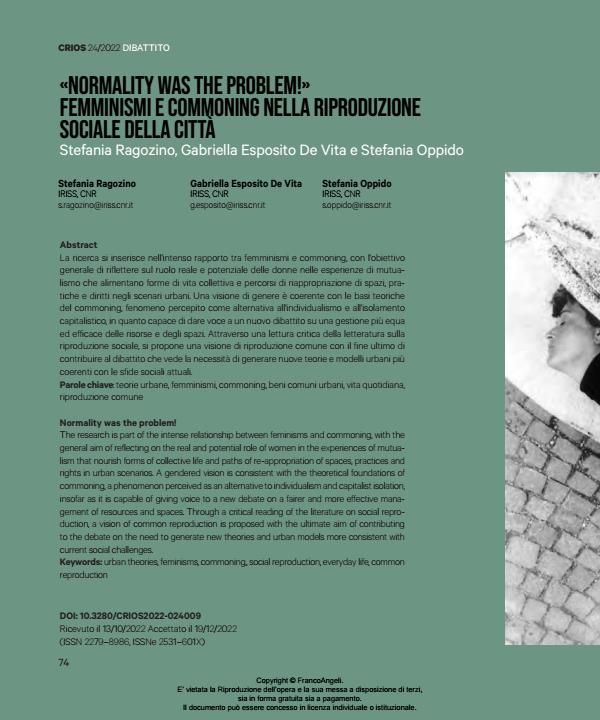Normality was the problem!
Journal title CRIOS
Author/s Stefania Ragozino, Gabriella Esposito De Vita, Stefania Oppido
Publishing Year 2024 Issue 2022/24
Language English Pages 8 P. 74-81 File size 595 KB
DOI 10.3280/CRIOS2022-024009
DOI is like a bar code for intellectual property: to have more infomation
click here
Below, you can see the article first page
If you want to buy this article in PDF format, you can do it, following the instructions to buy download credits

FrancoAngeli is member of Publishers International Linking Association, Inc (PILA), a not-for-profit association which run the CrossRef service enabling links to and from online scholarly content.
The research is part of the intense relationship between feminisms and commoning, with the general aim of reflecting on the real and potential role of women in the experiences of mutualism that nourish forms of collective life and paths of re-appropriation of spaces, practices and rights in urban scenarios. A gendered vision is consistent with the theoretical foundations of commoning, a phenomenon perceived as an alternative to individualism and capitalist isolation, insofar as it is capable of giving voice to a new debate on a fairer and more effective management of resources and spaces. Through a critical reading of the literature on social reproduction, a vision of common reproduction is proposed with the ultimate aim of contributing to the debate on the need to generate new theories and urban models more consistent with current social challenges.
Keywords: urban theories, feminisms, commoning,, social reproduction, everyday life, common reproduction
- Computational Science and Its Applications – ICCSA 2025 Workshops Stefano Cuntò, Lorenzo Lodato, Federica Morra, Stefania Ragozino, Maria Cerreta, pp.321 (ISBN:978-3-031-97659-9)
Stefania Ragozino, Gabriella Esposito De Vita, Stefania Oppido, «Normality was the problem!» Femminismi e Commoning nella riproduzione sociale della città in "CRIOS" 24/2022, pp 74-81, DOI: 10.3280/CRIOS2022-024009